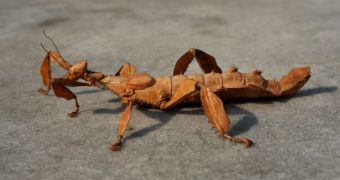More than 150 million years ago, insects were not the small, squashable, terror-inducing critters they are today. Flies were enormous in size, and they ruled supreme over Earth's skies. But something happened that caused all insects to become smaller, and now investigators think they know what happened.
The insect body became larger in prehistory at the same time oxygen made its way into the atmosphere. Generally speaking, more oxygen in the air equals larger species overall, regardless of class or family.
Insects were no exception, and for millions of years they continuously grew in size. Giant buzzers filled the ancient skies, and they remained unchallenged until they simply disappeared. Researchers figured this out by analyzing fossil records.
They have long since wondered about what may have caused the downfall of species that had exhibited great evolutionary success starting hundreds of millions of years ago. The new research demonstrates that the emergence of birds is what typed the celestial balance of power.
The only evolutionary adaptation that made sense for insects to employ was a decreased body size, even though oxygen levels in the atmosphere continued to rise. A smaller body was the only means of avoiding detection from the earliest flying lizards.
These conclusions belong to an investigation conducted by University of California in Santa Cruz (UCSC) assistant professor of Earth and planetary sciences, Matthew Clapham. Graduate student Jered Karr was also a part of the research team.
Details of their research were published in the June 4 online early issue of the esteemed journal Proceedings of the National Academy of Sciences (PNAS), e! Science News reports.
By 300 million years ago – when insects reached their top sizes – a dragonfly-like critter of the griffinfly family had a wingspan of 28 inches (70 centimeters), similar to that of a modern pigeon.
“Maximum insect size does track oxygen surprisingly well as it goes up and down for about 200 million years,” Clapham explains. The expert takes a very active interest in studying the correlation between ancient oxygen concentrations and insect sizes.
“Then right around the end of the Jurassic and beginning of the Cretaceous period, about 150 million years ago, all of a sudden oxygen goes up but insect size goes down. And this coincides really strikingly with the evolution of birds,” he concludes.

 14 DAY TRIAL //
14 DAY TRIAL //